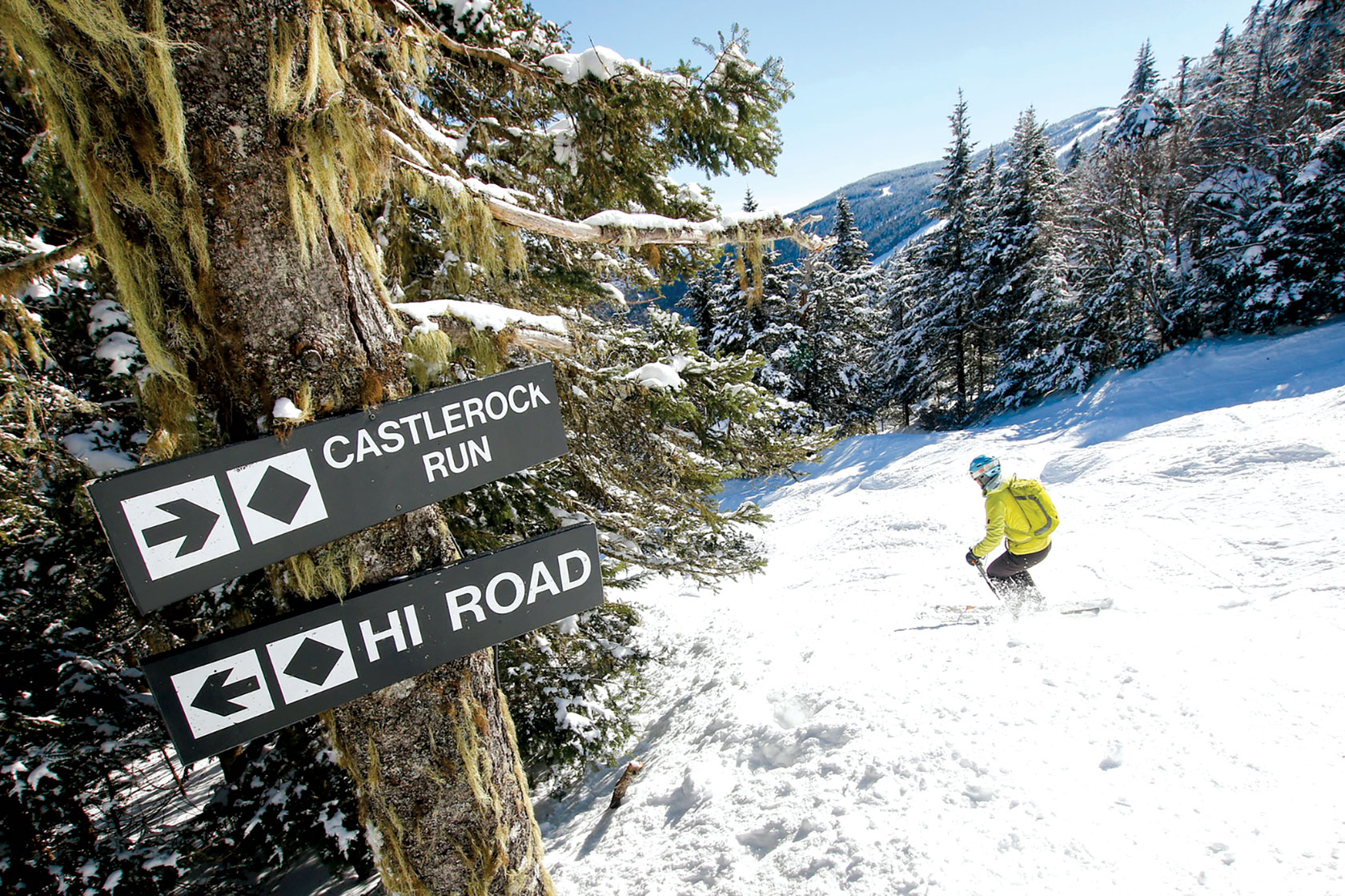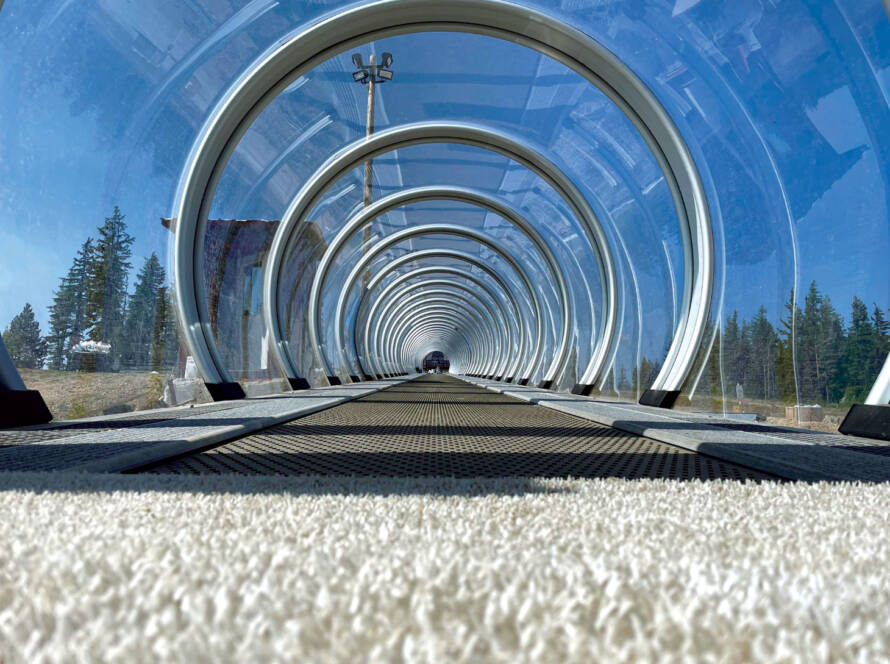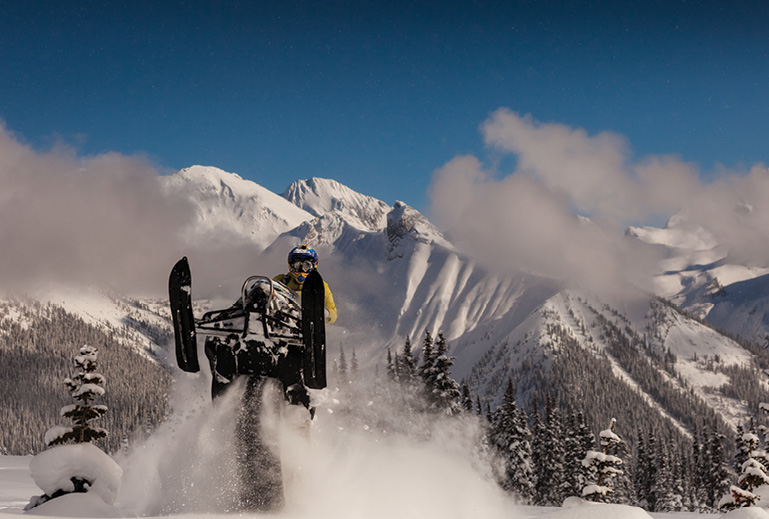Sugarbush Resort was established in 1958 by Damon and Sara Gadd, an entrepreneurial couple who would come down from New York City to take in Vermont’s vibrant skiing scene, and Jack Murphy, the former general manager of the neighboring Mad River Glen resort. In these early days, Sugarbush became known as “Mascara Mountain” because it attracted New York elite and many famous people went there to be seen.
Next door was another resort called Glen Ellen Ski Area, which focused on attracting local businesses and had more of a family atmosphere. In 1979, Sugarbush purchased Glen Ellen and merged the two into one big destination under the Sugarbush brand. In 2020, Sugarbush was acquired by Alterra Mountain Company, which has since invested tens of millions of dollars into on-mountain improvements at Sugarbush and has brought the resort into the Ikon Pass network of premier mountain destinations.
Sugarbush Resort is located in the heart of central Vermont, in the area known as the Mad River Valley, which includes several small towns such as Duxbury, Fayston, Moretown, Waitsfield and – closest to Sugarbush – Warren.
The Mad River Valley is exactly what most people think of when they think of Vermont, and that is not by accident. The local community has gone to great effort to preserve what it feels is quintessential Vermont to cater to a lively tourism industry, such as the bustling shops and artisan crafts, fine dining experiences created with local foods and, of course, its famous covered bridges that dot the surrounding farmland.
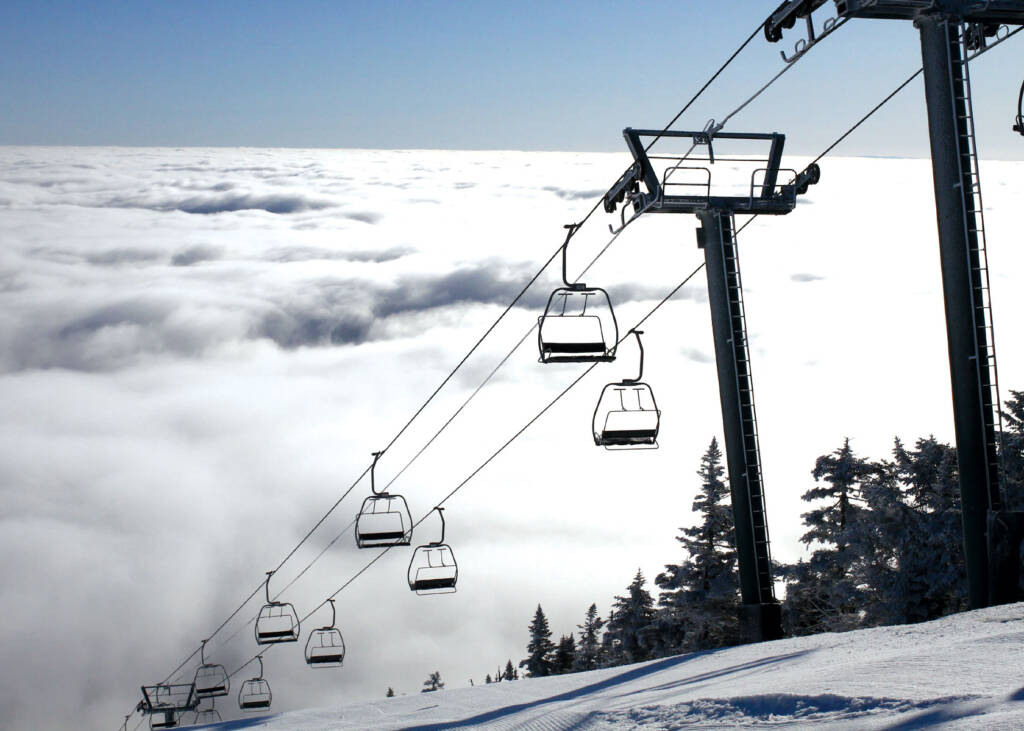
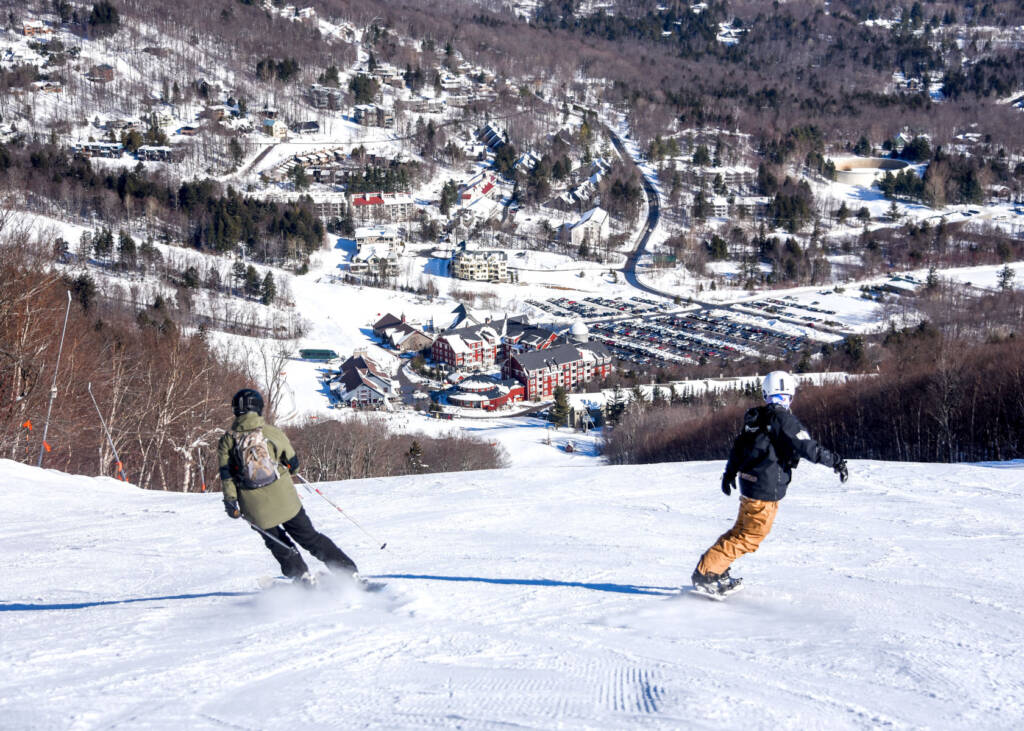
“It is said that you come here for the mountains, but you stay for the valley,” said John Bleh, Sugarbush Resort’s communications manager. “So many [guests] show up here for the skiing and end up falling in love with the town – this cool and quirky place that has purposely kept out the chain restaurants and box stores in order to maintain the eclectic charm Vermont is known for.”
Unparalleled terrain
With two mountains, four terrain parks, six peaks and nearly 30 wooded areas, as well as the 2,000-acre Slide Brook Basin, it’s clear to see why Sugarbush is considered one of New England’s largest ski areas.
The resort is best known for its spectacular terrain, which features some of the highest elevations in the area. The resort has a nice mix of beginner and intermediate trails, but people choose Sugarbush primarily because of its expert, high-end terrain. A large portion of Sugarbush’s clientele is local, but season after season it continues to attract skiers of all levels from New York and Massachusetts, and around the world.
Of the two mountains that make up the resort, Mount Ellen is the tallest, boasting a 2,600-foot vertical drop and 39 trails. Lincoln Peak has a vertical drop of 2,400 feet and 72 trails. The resort features a healthy mix of green, blue, black and double black trails, but its black and double black trails provide some of the gnarliest terrain found in the eastern United States.
“One specific area is called Castlerock, and this is definitely the most well-known part of the resort,” said Bleh. “Castlerock is an old-school trail system featuring narrow trails, steep rocks, stumps, roots and all-natural snow. It’s really kind of a glimpse back in time of the way trails were built long ago.”
Lincoln Peak is the more developed of the two mountains with a base area, hotel, ski schools and rental shops, and multiple lodges and restaurants. Less than a quarter of a mile down the road is Sugarbush’s Health and Recreation Center, which also has fitness facilities, indoor and outdoor pools, fitness classes and tennis courts. The resort also finished installing a couple of simulators for guests to play virtual golf and up to 30 games for kids.
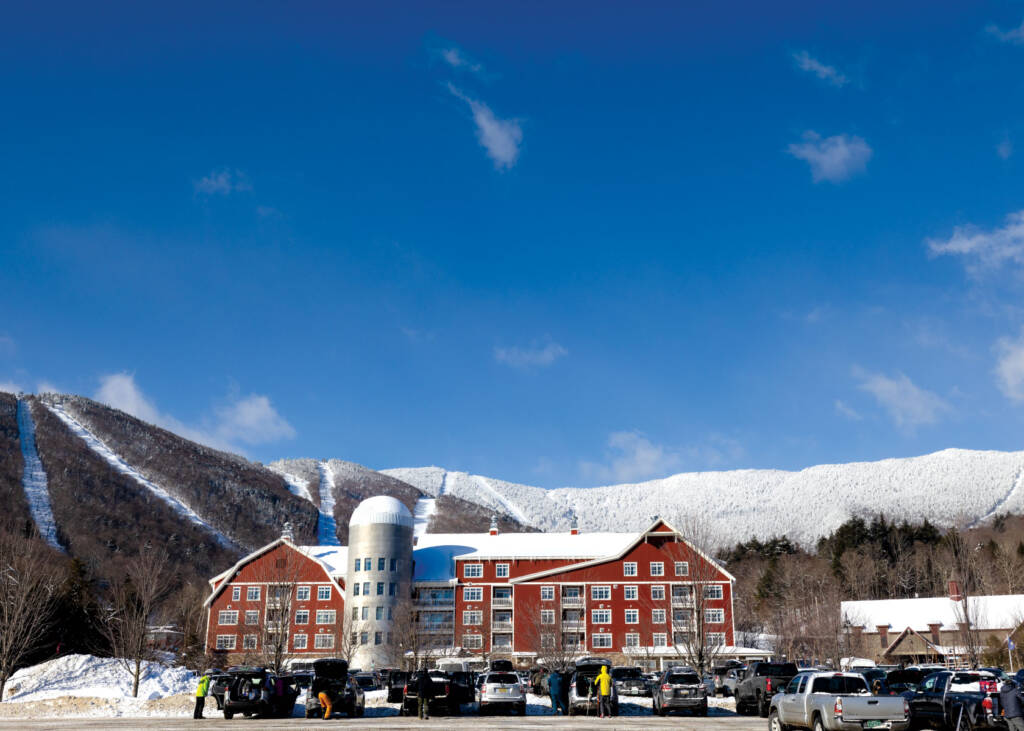
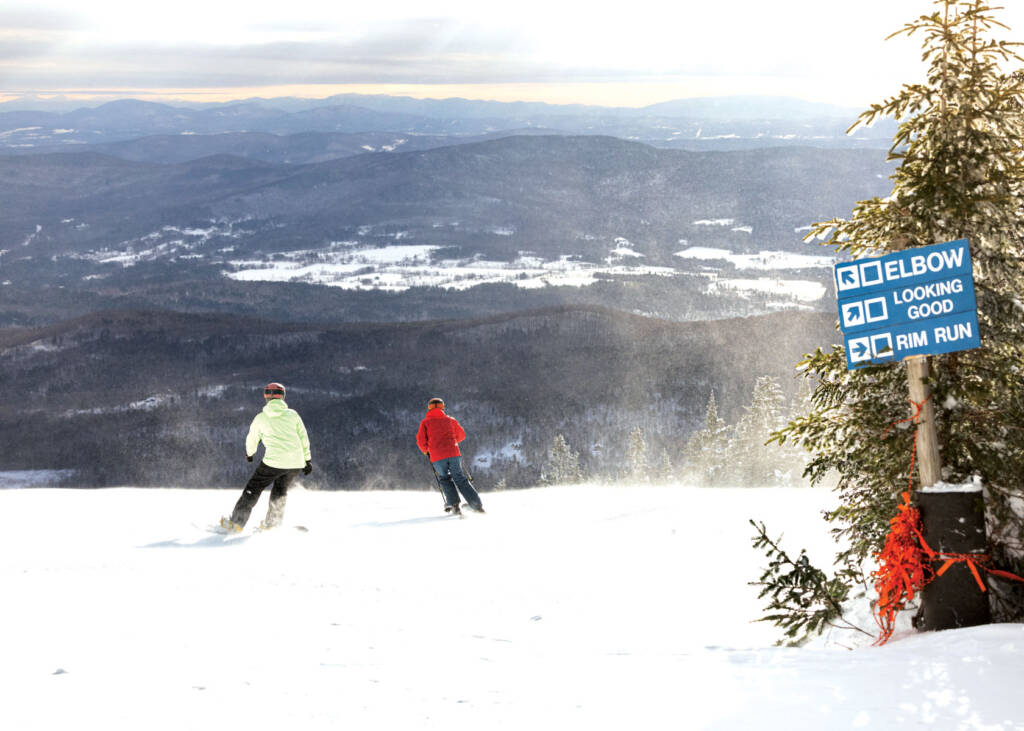
On Mount Ellen, Sugarbush has preserved what people love most about the mountain and only the original base lodge was recently renovated, offering a more “no frills” ski experience. It features a ski school and a rental and gear shop. Mount Ellen also provides space for a local ski academy and shares its base lodge with Vermont Adaptive Ski & Sports, a nationally recognized organization that empowers people of all abilities through inclusive sports and recreational programming regardless of ability to pay.
“Between the two mountains there are a number of amenities that enhance what we offer at Sugarbush, allowing visitors to diversify their vacation experiences,” said Bleh. “We like to encourage people to go check out the local restaurants and shops in town so to not take away from the communities here in the Mad River Valley. This way we can grow together and benefit each other – that’s what makes Sugarbush different.”
One of the resort’s most unique non-skiing winter activities is its Sunrise First Tracks experience, where guests have an early morning opportunity to book a private Cat Ski and ride in a heated, enclosed cabin, and can take in the pristine, deep powder or untouched corduroy as they cruise down the mountain before anyone else. Along the same vein, the resort’s Après Groomer Rides offer guests a private, one-hour ride in the cat to the summit of Lincoln Peak, where they can enjoy breath-taking views across Lake Champlain to the beautiful Adirondacks. On certain evenings, they may even see all the way to the White Mountains in New Hampshire.
Things continue to roll during off season with activities like mountain biking, summer camps, scenic lift rides and disc golf. The resort also holds big spring events, such as pond skimming or concerts, and is a prime location for weddings, which is one of Sugarbush’s most significant revenue drivers when the snow is off the ground.
How the ski experience is made
The trail systems on both mountains are meticulously maintained thanks to Sugarbush’s 15-person grooming crew. The resort primarily uses PistenBully snow groomers along with a few Prinoth machines. Depending on the weather conditions, the trails are groomed every night in rotation.
On the two-thirds of the resort that receives snowmaking, Sugarbush uses a mix of HKD, Snow Logic and SMI snowmakers. Sugarbush Resort has been upgrading its snowmaking capacity over the last decade and has separate snowmaking ponds, including the required infrastructure. The snowmaking season typically runs from the beginning of November until the end of February, and sometimes as late as March.
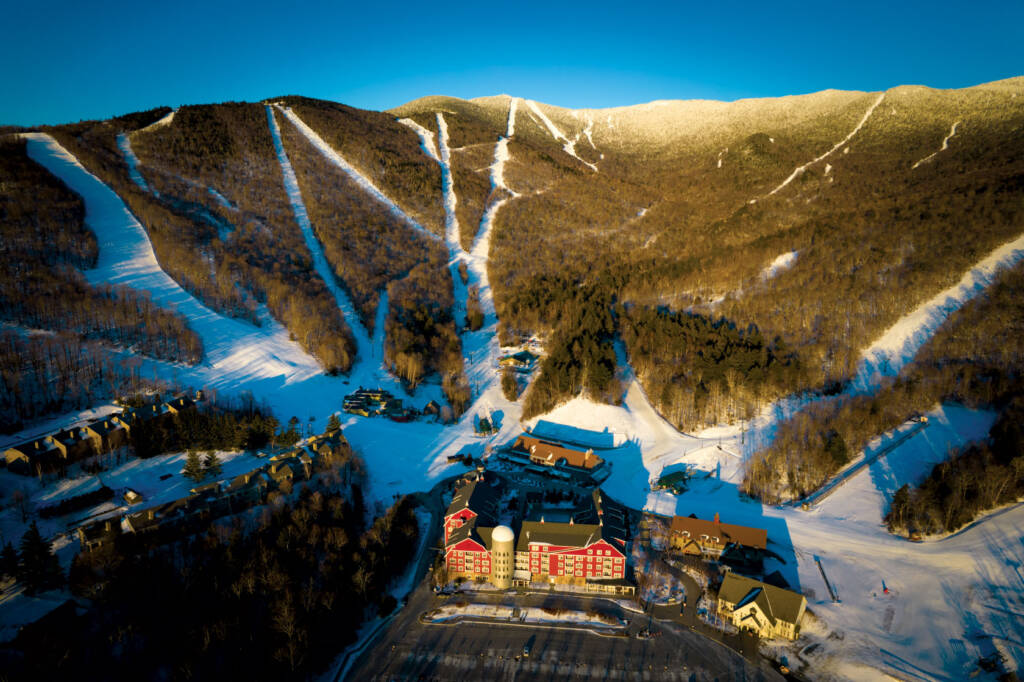
Where many resorts may conduct snowmaking over the entire mountain, Sugarbush finds that this tends to change the quality of the snow for skiers. The resort purposefully leaves about a third of its terrain untouched by snowmaking for those who prefer natural powder for schussing down the mountain.
“Like many resorts, we’ve been investing in snowmaking for years and years, but we purposefully only make snow on about 70 percent of our terrain because many people love the natural snow and they just want to enjoy a lot of these trails without snowmaking,” said Bleh.
Sugarbush Resort has a total of 16 lifts (a mix of Poma and Doppelmayr) and two Sunkid moving carpets in the beginner area. Sugarbush does not have a base to summit lift, relying instead on lower and upper mountain lifts.
“All of our lower mountain lifts are high-speed detachable quads and, when you get to the different upper mountain lifts that serve different pods of the mountain, those are all fixed grip lifts because there’s less terrain up there,” said Bleh. “This lets us limit the amount of downhill traffic and keep the on-trail experience worthwhile for all skiers, at all levels of ability.”
Sugarbush also features the Slide Brook Express Quad. Installed in 1995, this chairlift travels a total of 11,012 feet between Lincoln Peak and Mount Ellen. The Slide Brook Express is the longest and fastest detachable quad in the world.
Giving back to the region
As a steward of the land with a business directly impacted by climate change, Sugarbush takes its responsibility for sustainability very seriously. The resort is an endorser of the National Ski Areas Association’s (NSAA) Sustainable Slopes program and is an active participant in the NSAA Climate Challenge, a voluntary program dedicated to helping ski areas inventory, target and reduce greenhouse gas emissions.
The resort is also a very active participant within the Mad River Valley region and does what it can to support the local community whenever possible.
“We have created what we call the Be Better Here Fund, which is our mantra and motto,” said Bleh. “In the last fiscal year, this fund has provided more than $1.5 million to local organizations in need, both in terms of cash and in-kind donations from the resort. We also work with a number of local and national non-profits that give opportunities for skiing to those who might not otherwise have one, such as the High Five Foundation.”
Looking ahead, Sugarbush is planning to replace one of its summit lifts – the Heaven’s Gate lift – and upgrade it from a triple to a quad. In addition, the resort is in the permitting process to construct two new employee housing projects that will provide rooming for more than 200 staff members. The resort is also in the middle of working on its new 25-year master plan to help position Sugarbush well into the future.

